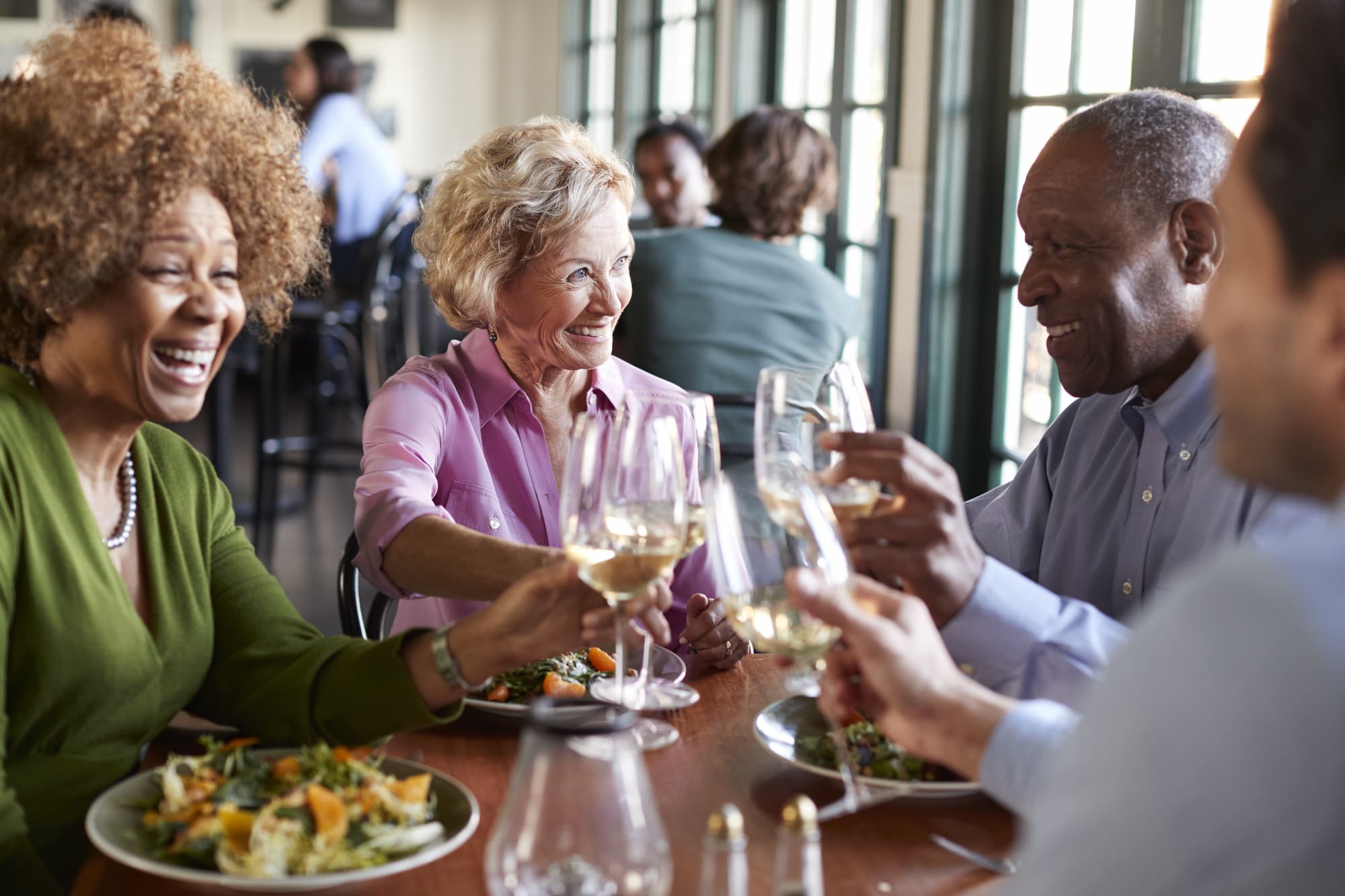 It’s hard for any adult to plan daily meals that have the right balance of nutrition and flavors while also monitoring things like fat and cholesterol. But for older people who don’t always have the energy to tackle both shopping and cooking, there are even more challenges.
It’s hard for any adult to plan daily meals that have the right balance of nutrition and flavors while also monitoring things like fat and cholesterol. But for older people who don’t always have the energy to tackle both shopping and cooking, there are even more challenges.
That’s why a retirement community that emphasizes tasty, nutritious meals — along with an environment that encourages communal dining — makes more of a difference than you may think.
The Vital Role of Balanced Nutrition for Seniors
Many older adults have decreased appetites, along with less enthusiasm for cooking. But at the same time, their need for healthy meals has never been higher. That’s why an independent living situation that provides some or all of their meals is exceptionally beneficial.
Retirement communities offer convenient meals and ones that are prepared by trained chefs who are knowledgeable about the nutritional needs of older residents.
While healthy meals are vital for everyone, seniors are especially in need of nutrients like Vitamin A, for vision support; B vitamins, to promote lower cholesterol and support brain function; calcium, to combat brittle bones and fragile teeth; vitamin D, to support calcium absorption as well as mental sharpness, and a range of minerals like iron and zinc to support a healthy immune system and muscle function. In addition, lean proteins and whole grains are crucial for boosting energy, promoting regularity, and reducing the risk of heart disease and stroke.
Taken together, these and other nutrients work hard to slow the effects of aging, such as decreased muscle tone and delayed wound healing. Access to proper nutrition can also elevate moods, sharpen memories, support healthy weight maintenance, and strengthen the immune system.
But, How Does it Taste?
Of course, most of us know which food choices are healthy ones. But making meals that both incorporate important nutrients and that are also pleasurable to eat is a different story. That’s why hot, professionally-prepared meals are so inviting to people living in independent living communities. Not only are residents spared the hassle of cooking, but they can look forward to meals that appeal to all of their senses.
Ideally, a retirement community offers both formal and informal dining options to tempt appetites further. Deupree House, for example, provides a traditional dining room serving appealing multi-course meals each night, starring appetizers like a hearty soup and entrees such as poached salmon or pork enchilada. Sides might include rice, bean salad, or roasted veggies to provide additional vitamins, minerals, and fiber. Of course, there’s always room for a fruit-based dessert!
Deupree House also boasts a pub-style dining option, with sandwiches, pasta dishes, and “build your own” salads and pizzas for residents who prefer an informal setting and meal. All boast fresh, healthy ingredients.
When you’re looking for an independent living community for yourself or a family member, it always helps if you can look at sample menus. These will tell you if the meals both sound tasty while also featuring a range of leafy greens, red, yellow, and orange veggies and fruits, lean proteins, healthy fats, and whole grains. If food allergies or preferences such as kosher preparation or vegan options are important to you, make sure to inquire about these considerations.
Social Engagement Benefits
A study conducted by the National Academy of the Sciences found that older people who feel lonely are more likely to experience serious health issues such as heart disease, hypertension, anxiety, and depression, along with cognitive loss. Unfortunately, just as isolation has more severe consequences for older people than for other adults, it’s also more likely to occur in older people.
With decreased mobility and transportation options, along with fewer contemporaries, socializing can be much more challenging. But for people who live in retirement communities or otherwise have access to more social engagement, health benefits include reducing chronic illnesses and pain, improved mood, and more interest in healthy lifestyle choices.
While residents in most independent living communities always have the option to dine in their apartments or cottages, it’s no coincidence that both the traditional dining rooms and the pub-like dining options are designed to be pleasant places to meet with friends.
Healthcare experts know how important it is for older adults to have the opportunity to socialize with others. Meeting for meals is a time-honored excuse for spending time with others. Of course, the lure of meeting up with people to dine also has the reciprocal benefit of tempting picky eaters with tasty, nutritious food when they otherwise might have unhealthy snacks at home or just skip that meal.
As we celebrated Episcopal Retirement Services’ annual fund gala, “A Taste of Giving'' this year, our administrators, caregivers, and residents were reminded of the crucial role that food and social engagement have in helping seniors thrive in their later years.
If you want to learn more about integrating fellowship and healthy food into your routine, contact us at Deupree House.












